9 ways to update a historic home while still keeping its vintage charm – tips from a NYC reno
How to update a historic house in just 4 days – home stager Jason Saft shares his practical tips for speedy transitional style
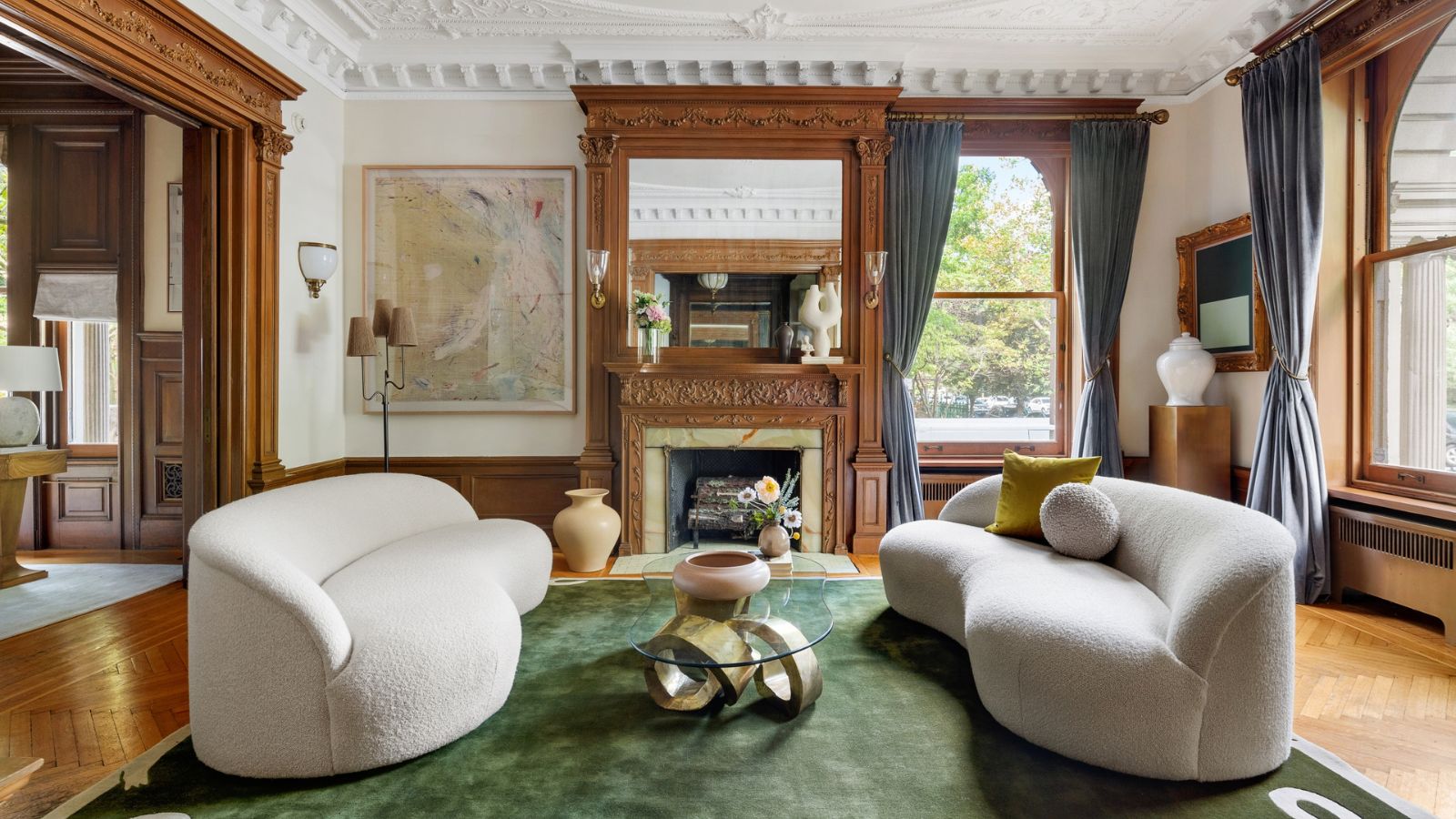
- 1. Respect the property's history
- 2. Preserve original features
- 3. Find balance in the color palette and styles
- 4. Opt for light-colored upholstery to modernize the space
- 5. Create an atmosphere that feels collected
- 6. Curate views within your home
- 7. Dress the space with well-chosen pieces for an instant uplift
- 8. Choose timeless, transitional pieces that won't date
- 9. Find space for art in every room
Here's the dilemma: you're trying to update a historic home that's packed with original features. You respect the unique character and beauty of the house but want to introduce modern styling and comforts.
Here's the reality: a mansion-scaled limestone townhouse in Brooklyn, NYC, built in 1898. It's all wood paneled walls, ornate ceiling moldings and polished parquet floors. Enter Jason Saft, founder of Staged to Sell Home, who recently reinvented the house design, adding contemporary, high-end furnishings to broaden its appeal to potential buyers, all the while honoring those special historic details.
There are lessons here for anyone looking to use transitional design to update a historic home, and plenty of tips for speedy transformations, too. Jason Saft is well qualified on both counts, since he incorporated pieces by some of the best contemporary designers and artists, and updated the 5-story, 9,000 square feet property in just four days.
1. Respect the property's history
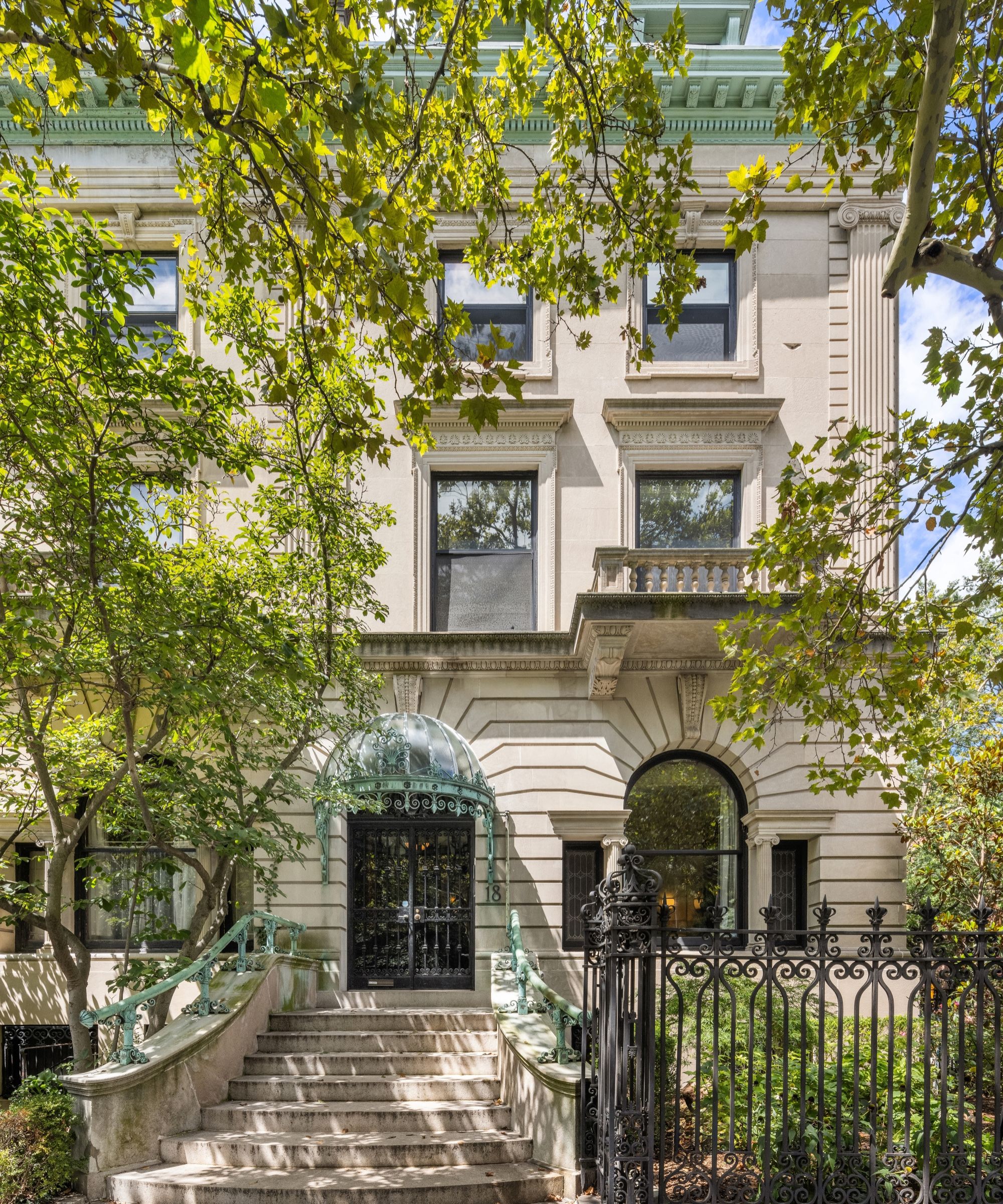
Respecting the house's origins is always the best starting point for a successful home renovation in an older property, and this was no different. The neo-Italian Renaissance townhouse was built by architect Montrose Morris and has real presence overlooking Prospect Park in Brooklyn. Jason Saft was not about to upset that heritage.
'When I was told the address, I was in,' says Jason. 'I’ve walked past this historic edifice for well over two decades and had always wanted to see the inside of this monumental house.
'I had just one 30-minute site visit prior to the tenant leaving the house and then installing three days later,' he recalls. 'I worked off memory and one late night final visit to prepare for the installation, which lasted for a day and a half.'
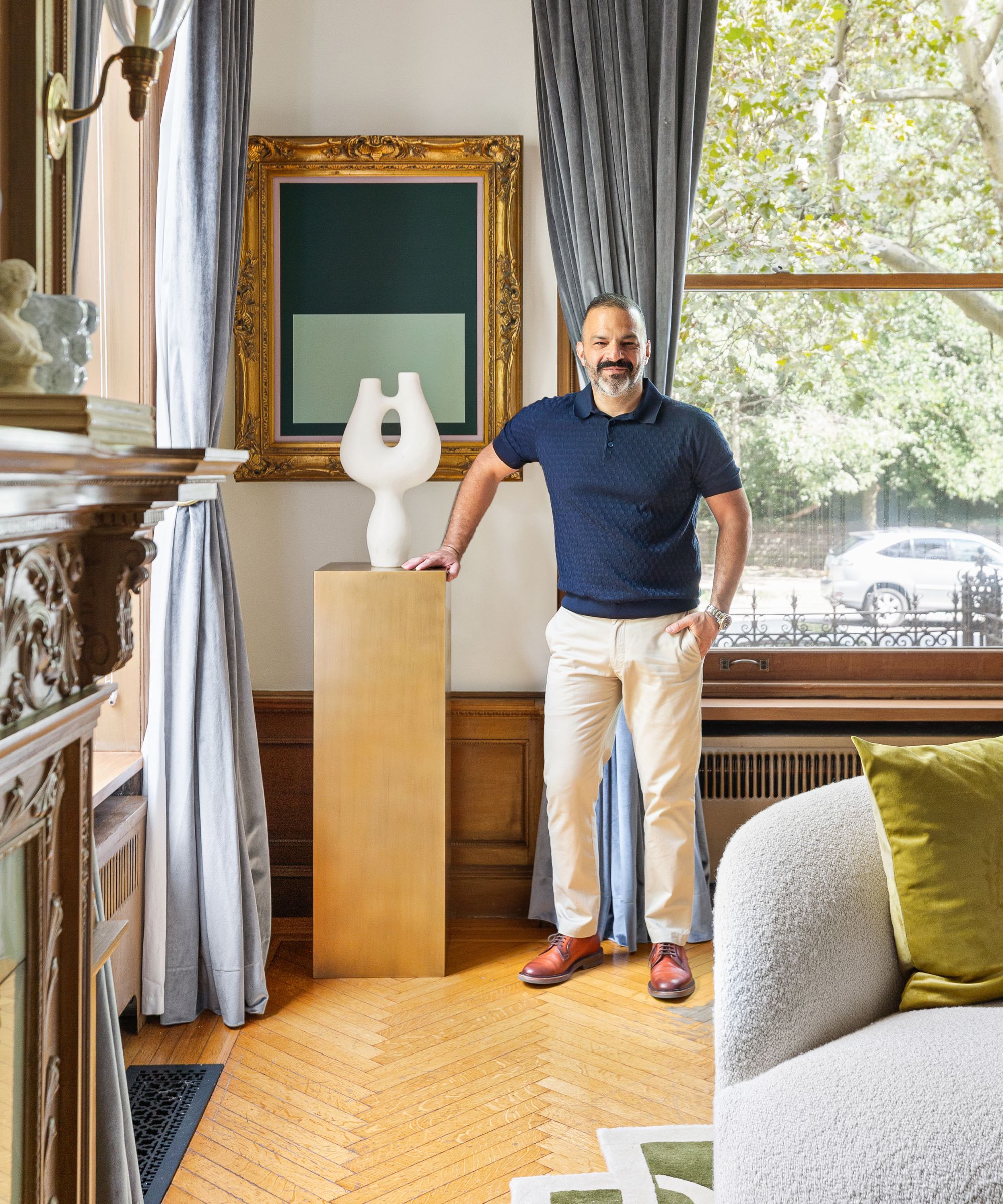
Staged To Sell Home is a leading boutique staging firm in New York City. Jason excels at transforming a space from what it is to what it should be, in order to achieve the highest return for his sellers and to help buyers see opportunity. With almost 20 years of expertise, the firm offers a cost-effective solution to yield high-return results. He was delighted to work on this historic home in Brooklyn, as he had frequently walked past the property and was very curious to see inside.
2. Preserve original features
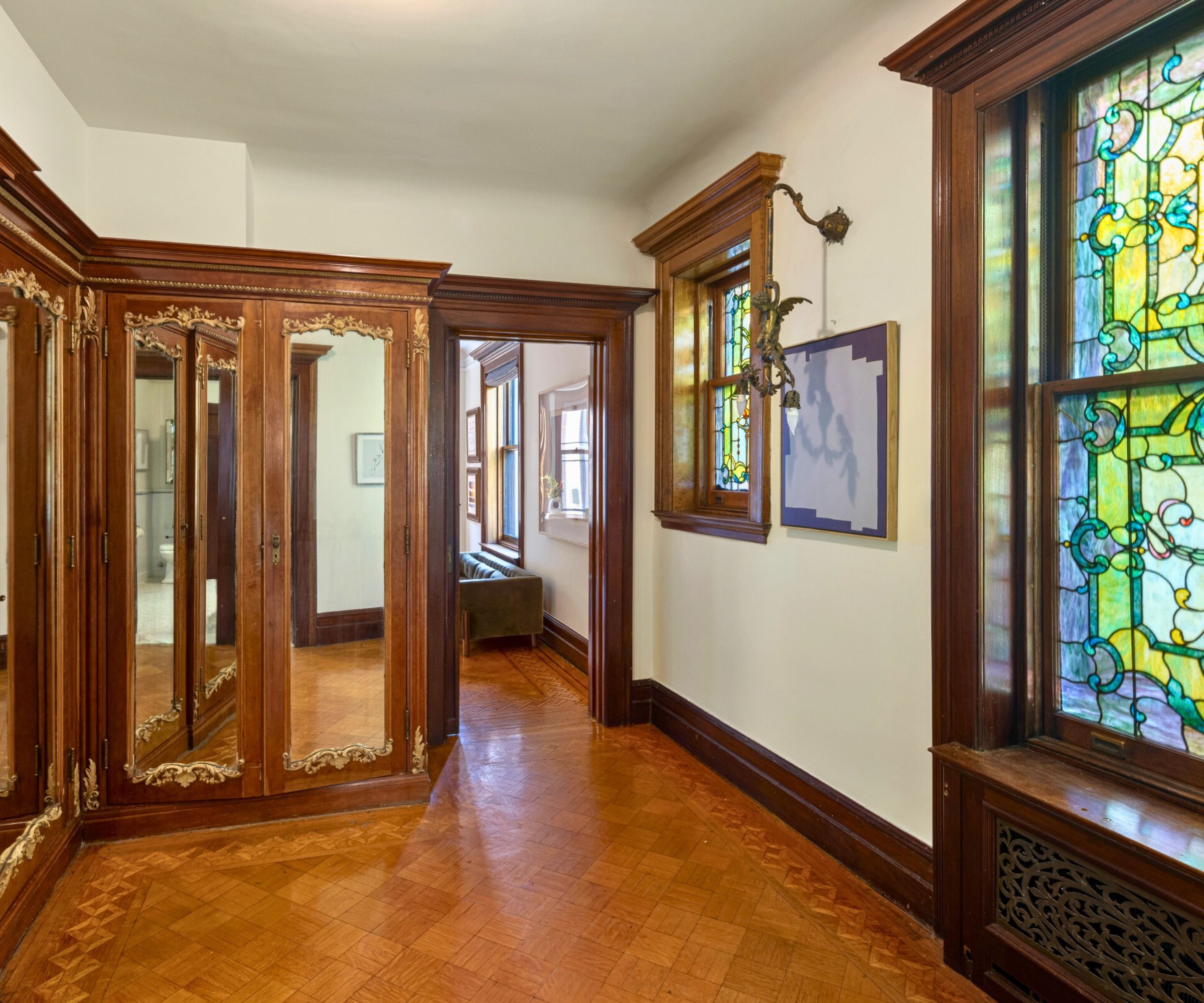
Updating a period property is always about finding a balance. Sometimes, as in this hallway with its mirrored closets and stained glass windows, it's about preserving the original architectural features to highlight the character and history of the home. A modern painting was the only addition here.
Elsewhere in the home, contemporary decoration and styling can be used alongside period details to make the property modern and inviting with surprising and colorful touches, showcasing transitional decorating ideas at their best.
3. Find balance in the color palette and styles
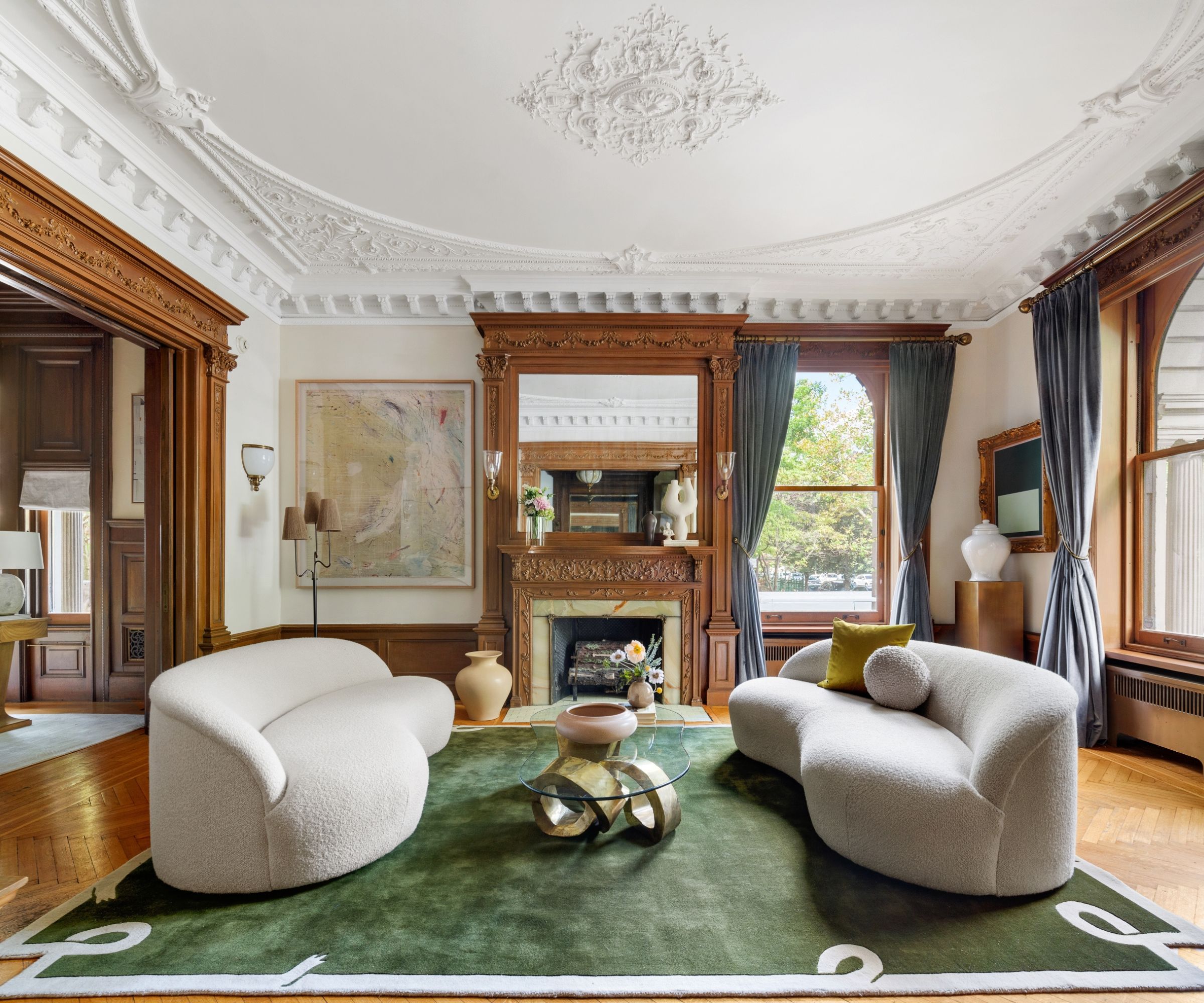
Take inspiration from the property's surroundings when choosing room color ideas, but also think about how existing features will feed into the new look.
As the house is located directly across the street from Prospect Park, Jason wanted to work in varying shades of green to play off the idea of the park. To lighten up the heaviness of the dark wood paneling that is consistent throughout the house, he also introduced a lot of creams, beige and white.
'A key to incorporating contemporary pieces into a historic home is to work with the existing architecture to find balance and repetition,' says Jason. 'In the front parlor of this house, I mimicked the molding on the ceiling with the curved ivory couches. They offer the perfect symmetry and there is a natural connectivity to the pattern from top to bottom.'
4. Opt for light-colored upholstery to modernize the space
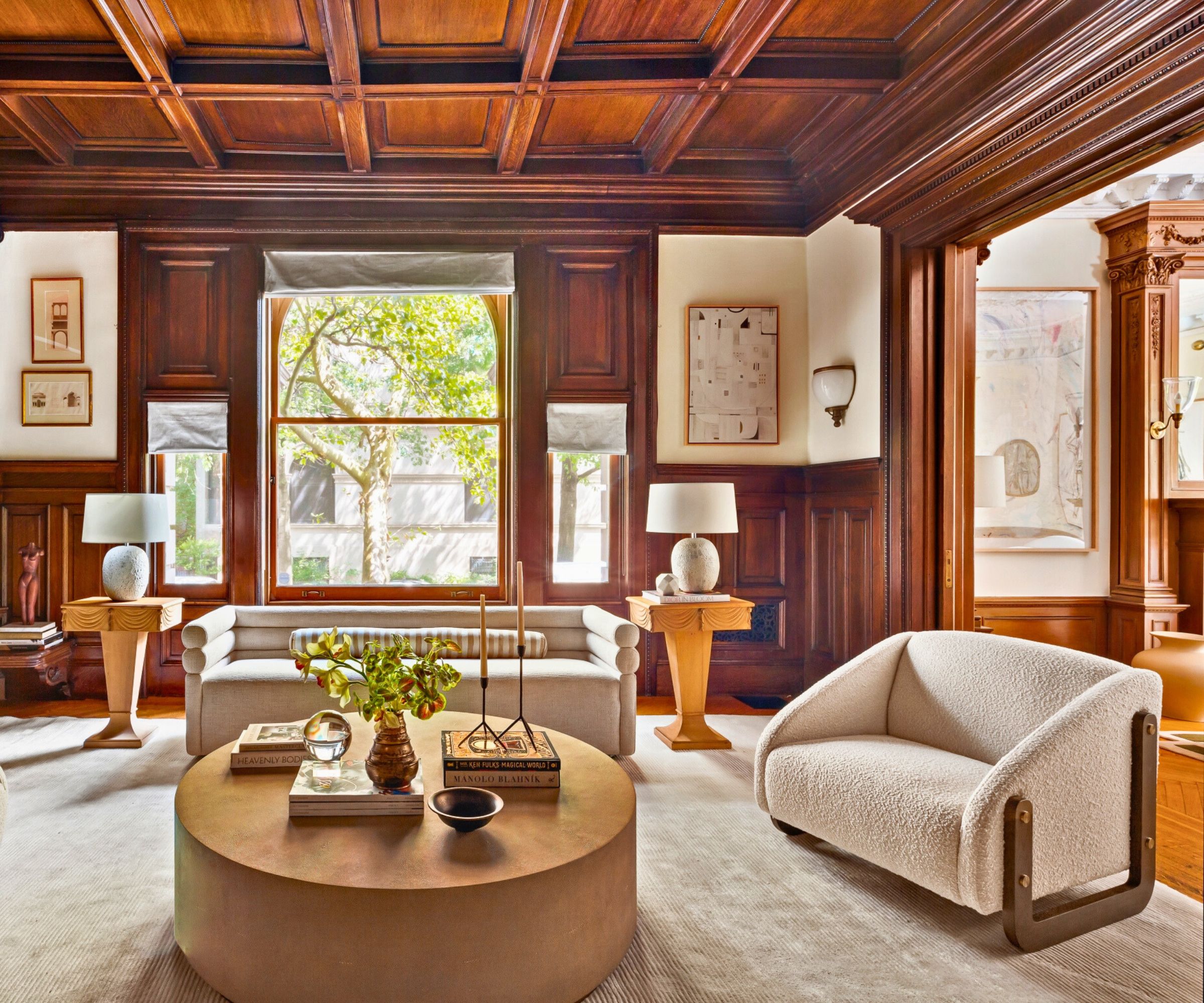
The designer juxtaposed the weight of the wood paneling against all sorts of soft white upholstered items in his living room ideas.
'The most common feedback I've heard from people viewing historic homes is that they find the woodwork to be too dark for their lifestyle,' says Jason. 'The biggest challenge when designing the home was respecting and accentuating the original details while also modernizing, lightening the space and making it feel livable and less like a museum.'
His solution? 'By bringing in lighter case goods and upholstered pieces, it helps to brighten up the living space and make the woodwork appear lighter.'
And it's not just the upholstery color that's important when you're seeking to modernize the space, you need to consider shape too, and buy the right couch to add contemporary lines.
5. Create an atmosphere that feels collected
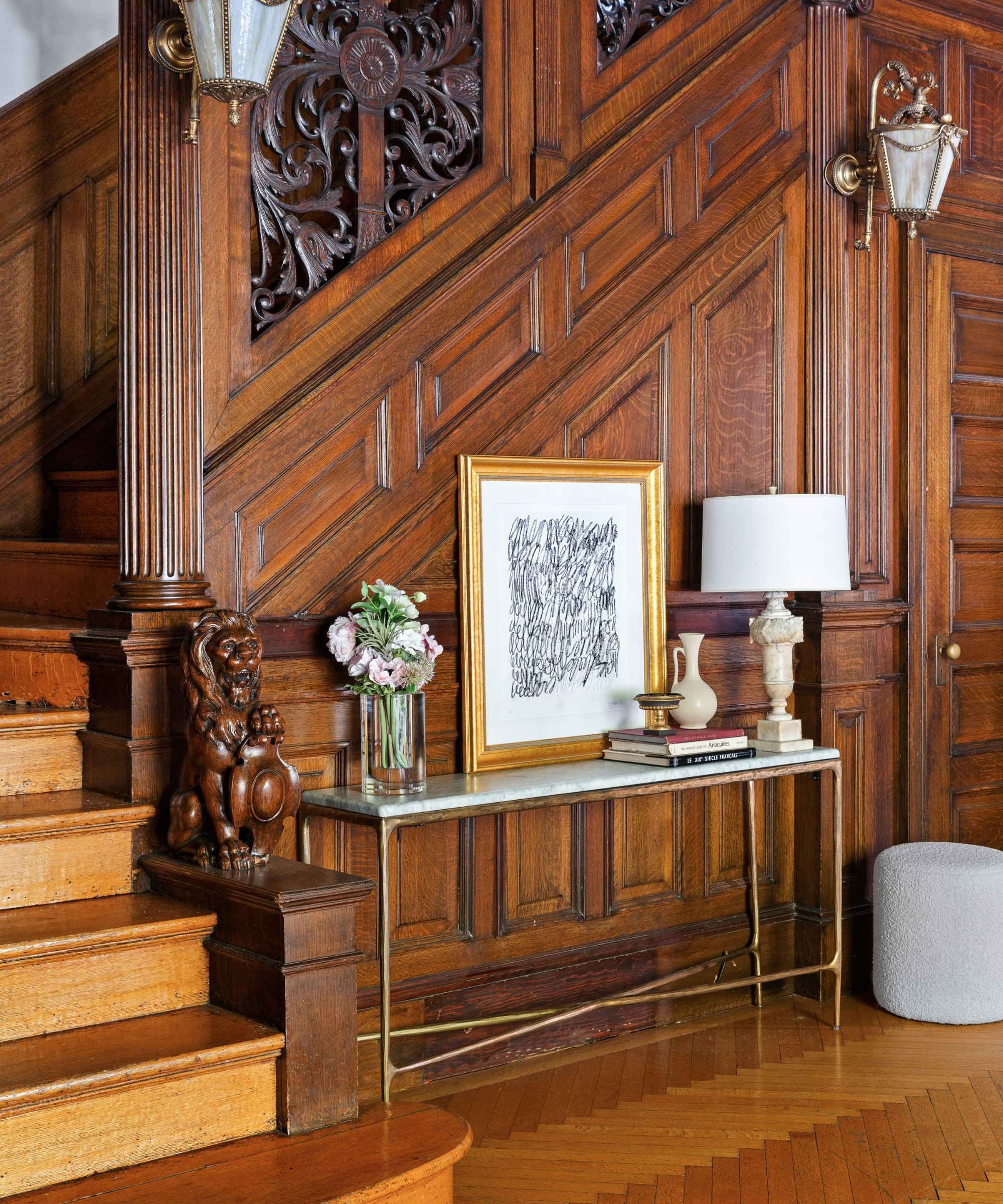
The magnificent original staircase is central to the home, one of many historical details, which can overwhelm some and create the perception of living in a museum. To counter that connotation, Jason chose lighter profiled pieces, like this console table and upholstered stool, that have a softness and modernity to them yet when paired together, and decorating with antiques, create a harmonious home that feels collected. He wanted to play off the home's grandeur but also make it feel welcoming.
6. Curate views within your home
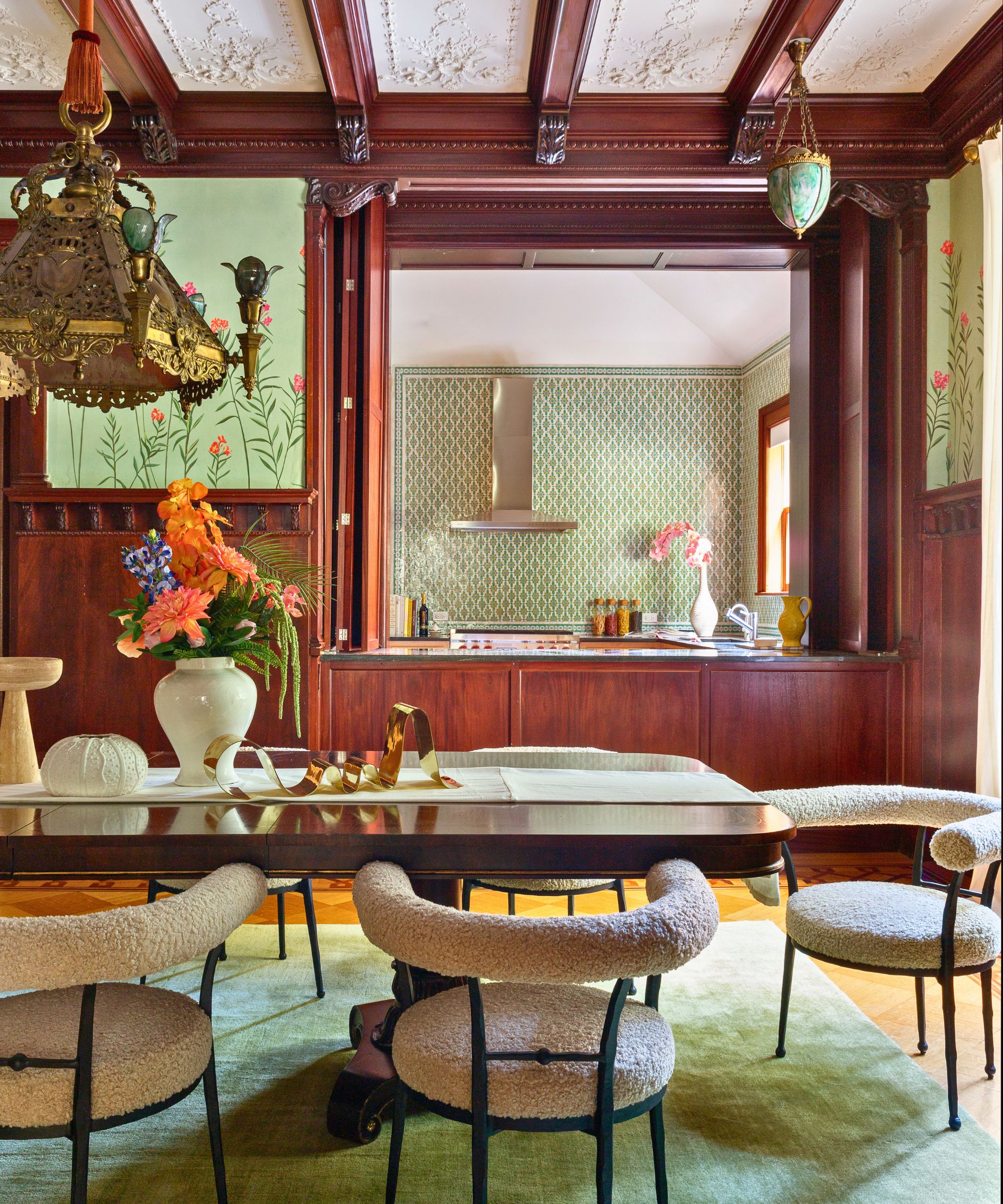
The dining room ideas sum up the successful crossover of styles that Jason introduced with his quick-fire transformation. A custom dowel table from Century Furniture with Rodin dining chairs by Athena Calderone for Crate & Barrel fly the contemporary flag in this transitional scheme. The ceiling beams, dark wood paneling, and even the practical serving hatch, provide the traditional side of the look.
'Balancing traditionalism and modernism with an artful mix is essential,' explains Jason. 'I've always mixed antique pieces with more modern ones. Working with them is a bit of trial and error, but it's that testing and experimentation that leads to a well balanced home that honors the past and also caters to our current needs.'
7. Dress the space with well-chosen pieces for an instant uplift
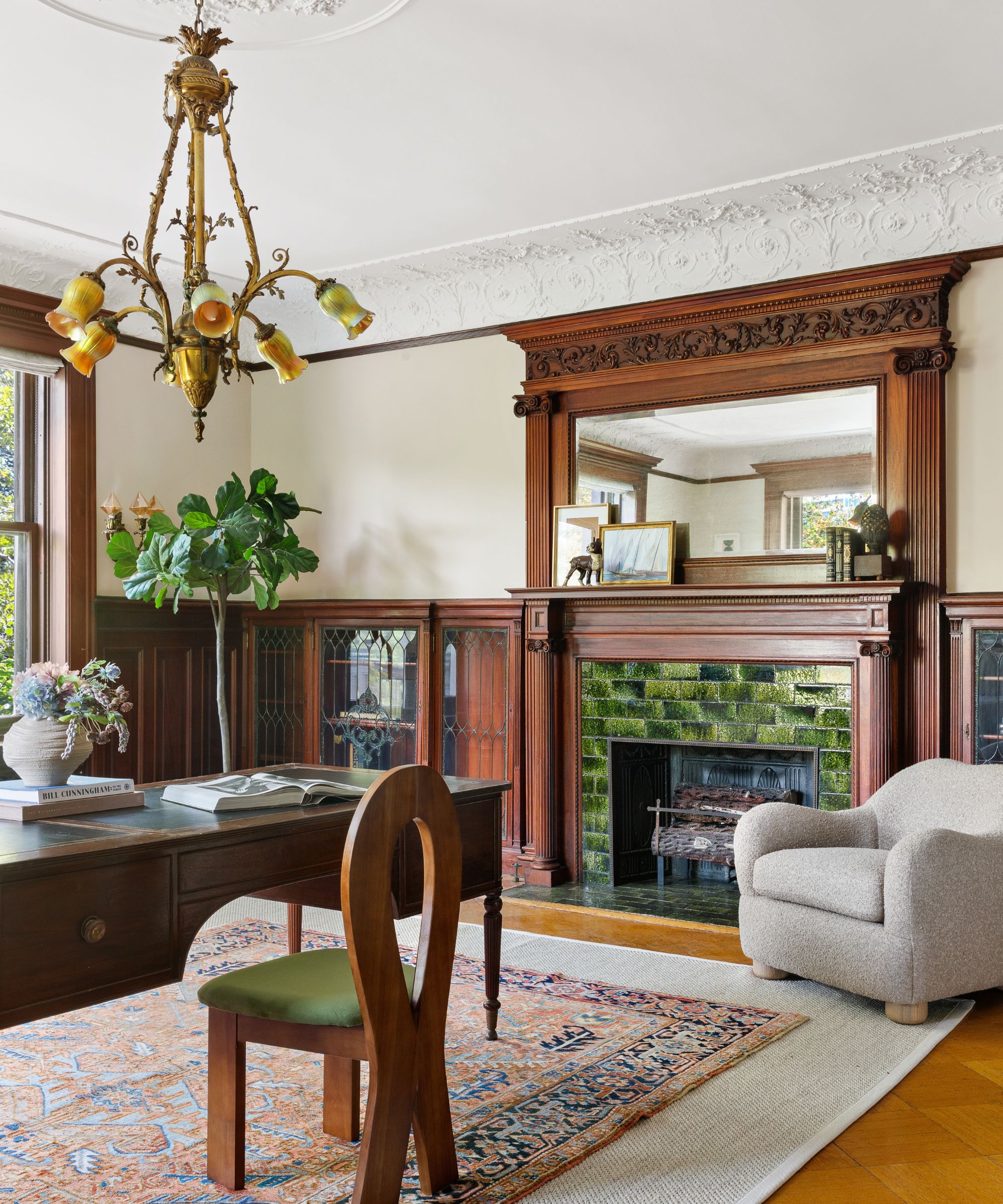
In a room that was dominated by its original fireplace and paneling, Jason leant into the period style for his home office ideas, but lightened the touch with a comfortable mix of midcentury furniture, and some well-chosen antiques and found objects. A Kittinger antique desk is at the center of the scheme, together with a vintage rug. Transitional design is not just about mixing old and new, but can blend a mix of different styles as well as eras.
'I like to reference older books on traditional design and décor when approaching an older home,' explains Jason. 'Educating yourself on past design styles and aesthetics helps to inform you on how to approach traditional design. Often I take an idea or pieces rooted in traditionalism, but rework them with modern pieces or smaller modern accessories in traditional case goods to balance it all out.'
8. Choose timeless, transitional pieces that won't date
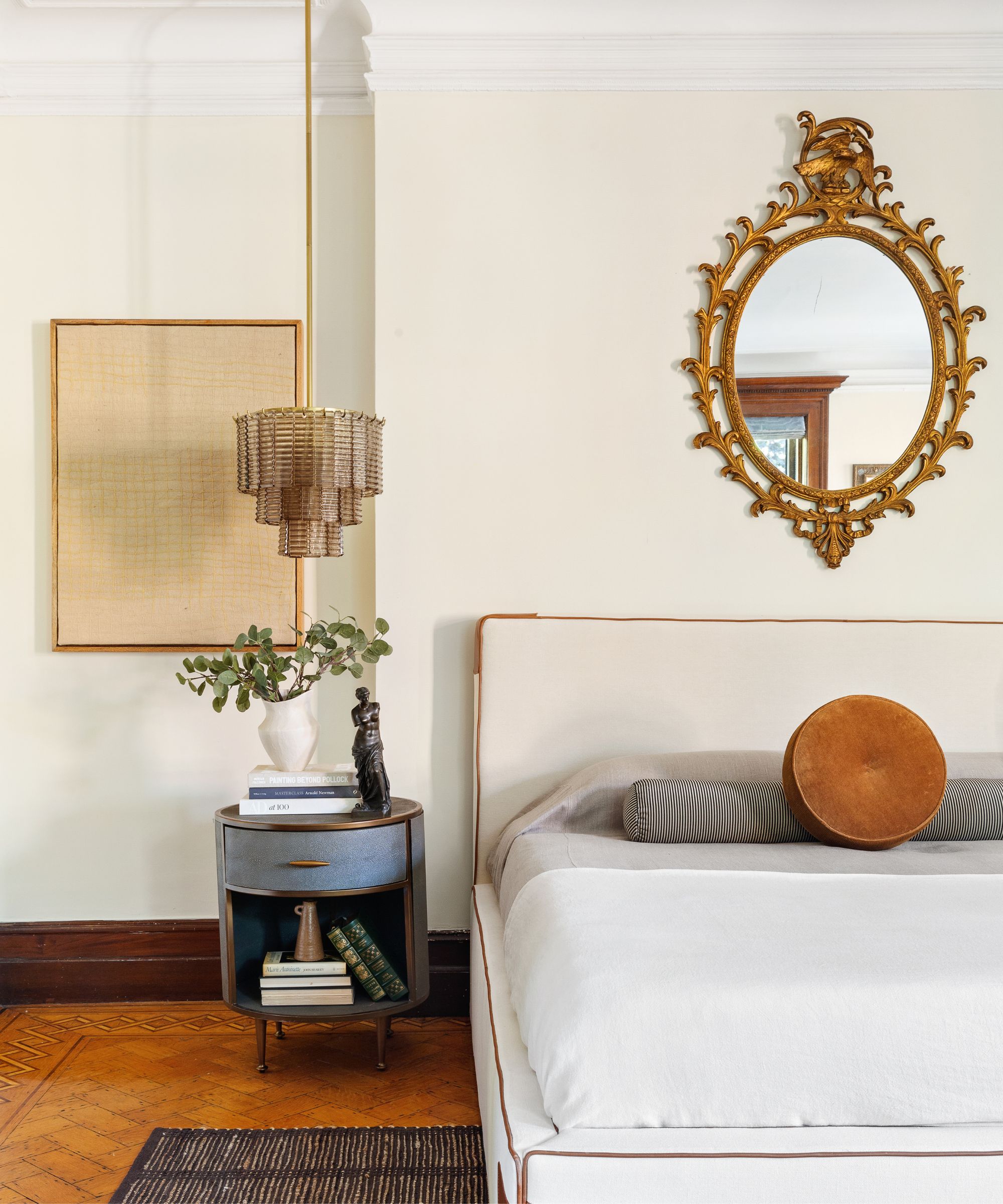
When choosing big ticket items such as beds and couches, it's a good idea to select timeless well-made designs that won't date, even in a traditional setting. Bedroom ideas for the primary bedroom include the clean-lined Tailor Stitch bed by CB2, and Stripe Rug by Colin King for West Elm. The mirror is an antique.
9. Find space for art in every room

Jason Saft brought in artworks and sculptures from contemporary artists including Simone Bodmer-Turner, but also mixed in traditional art and architectural prints. He suggests placing modern artworks in traditional frames to marry the two design styles.
Similarly, the designer mixed midcentury-style furniture, such as this Marconi couch by CB2, and Ambie side chair by Jake Arnold for Crate & Barrel, with custom contemporary pieces like the Calacatta Rose Viola coffee table.
We're still marveling at the speed of this home's transformation in Jason Saft's capable hands. With a careful blend of styles, colors, art, and furnishings, he has updated the historic townhouse and maximized its appeal. And, best of all, thanks to Jason's expert staging tips for reinventing a home we can all give it a try.
It just might take me a lot longer than four days.
Home Staging and styling: Jason Saft, Staged to Sell Home
Photography: Shannon Dupre / DDReps
Sign up to the Homes & Gardens newsletter
Design expertise in your inbox – from inspiring decorating ideas and beautiful celebrity homes to practical gardening advice and shopping round-ups.
Karen sources beautiful homes to feature on the Homes & Gardens website. She loves visiting historic houses in particular and working with photographers to capture all shapes and sizes of properties. Karen began her career as a sub-editor at Hi-Fi News and Record Review magazine. Her move to women’s magazines came soon after, in the shape of Living magazine, which covered cookery, fashion, beauty, homes and gardening. From Living Karen moved to Ideal Home magazine, where as deputy chief sub, then chief sub, she started to really take an interest in properties, architecture, interior design and gardening.
-
 Orange and green is the bold color pairing quietly transforming homes in 2025 – here's 4 reasons why
Orange and green is the bold color pairing quietly transforming homes in 2025 – here's 4 reasons whyInterior designers are making the orange and green combination work wonders – this is how you can too
By Sophia Pouget de St Victor Published
-
 This Michelle-Pfeiffer-approved chair is made of a forebodingly unusual material, opening the debate: Is it a rustic stunner, or a danger to sitters?
This Michelle-Pfeiffer-approved chair is made of a forebodingly unusual material, opening the debate: Is it a rustic stunner, or a danger to sitters?The actress took to Instagram with a chair made of a controversially sharp material – and fans are unsure of how they feel about it
By Sophie Edwards Published